Home >> News & Event >> News >> Flat Panel Detector VS Image Intensifier: Which one should be your best choice?
If you are looking for a mobile surgical C-arm, you must comprehend the distinctions between an image intensifier and a digital flat panel detector.
Let's explore further to uncover these two technologies, The image intensifier was developed in 1948 and became available in the 1950s, whereas the digital flat panel detector is a new technology developed in the 1990s.
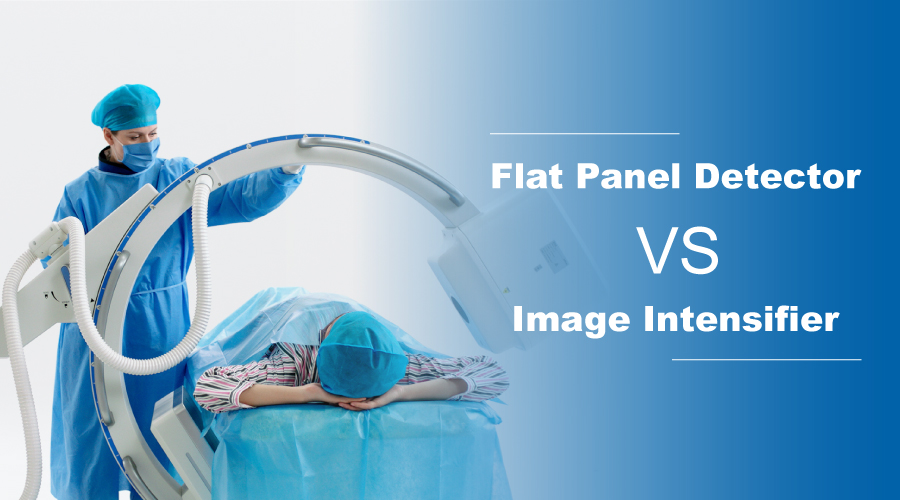
What Is a Flat Panel Detector?
A flat panel detector (FPD) is a high-tech digital X-ray image sensor that plays a pivotal role in modern medical imaging. Essentially, it captures X-rays and converts them into a digital image. The technology behind flat panel detectors consists of two main elements: a scintillation layer and a photodetector array.
The scintillation layer takes incoming X-rays and converts them into visible light. The photodetector array then captures this light and converts it into an electronic signal. This signal is then processed into a clear, high-resolution digital image
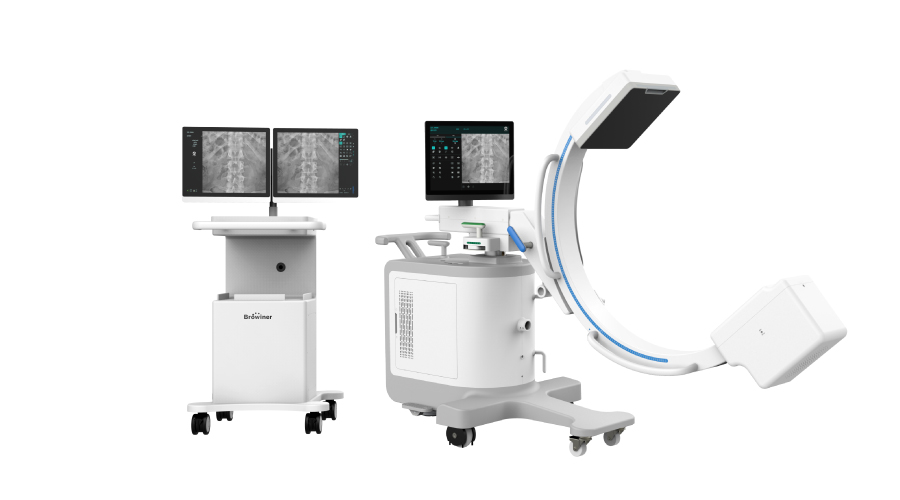
What Is an Image Intensifier?
Image intensifiers are another important piece of equipment in the field of X-ray imaging. Image intensifiers work by amplifying the intensity of the light available in an image to improve the visibility of the image.
In an image intensifier, X-rays passing through the body strike a fluorescent screen that converts the X-rays into other types of electromagnetic radiation. These rays then strike a photocathode, which emits electrons. The electrons are accelerated through a vacuum tube, hit a fluorescent screen, and are converted to electromagnetic radiation, producing a bright, enhanced image.
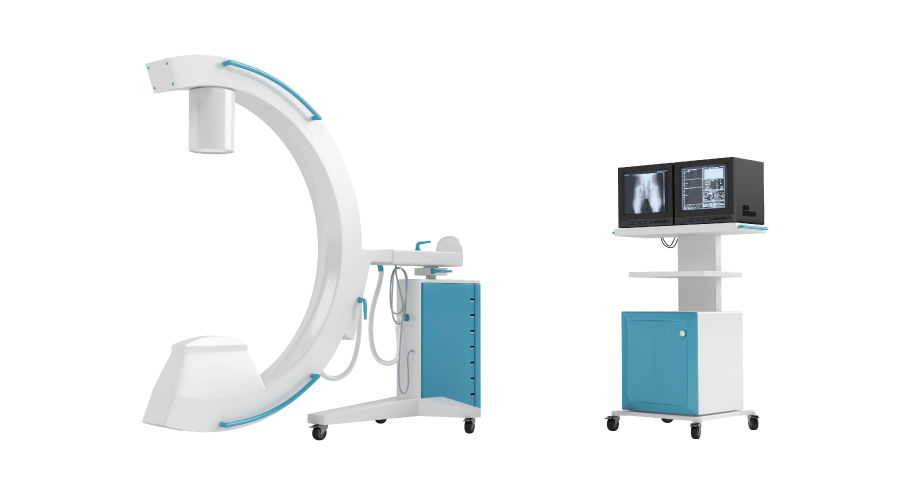
What Are the Differences Between Image Intensifiers and Flat-Panel Detectors?
1. View field
First of all, about the view field. Compared to the size of the conventional image intensifier, the flat-panel detector is capable of expanding the view field by 22%, providing clinical diagnosis with a broader perspective.
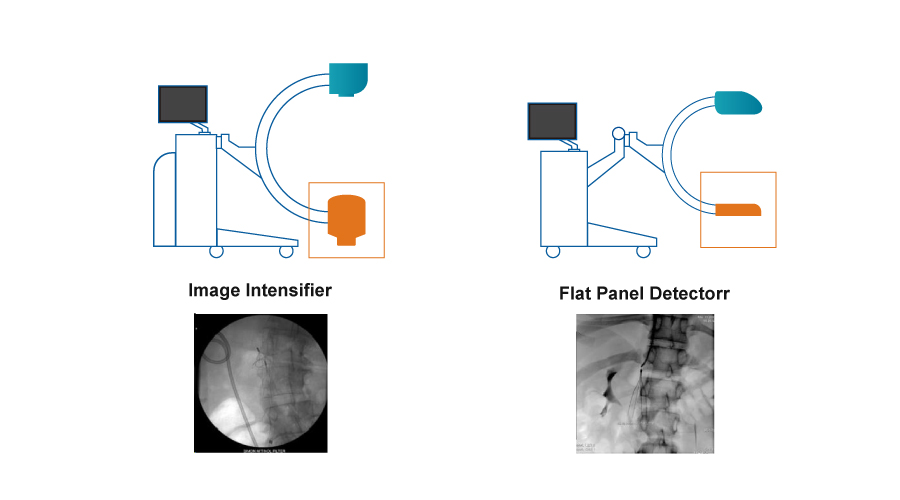
2. Workflow
image Intensifier
Secondly, the image intensifier requires multiple steps to be completed in its workflow.
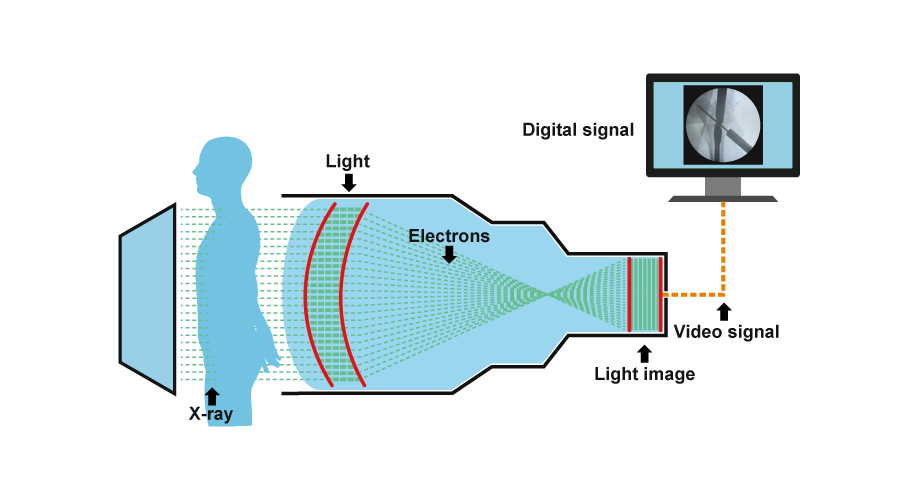
Flat Panel Detector
In contrast to an image intensifier, a flat panel detector has a comparatively simpler workflow.
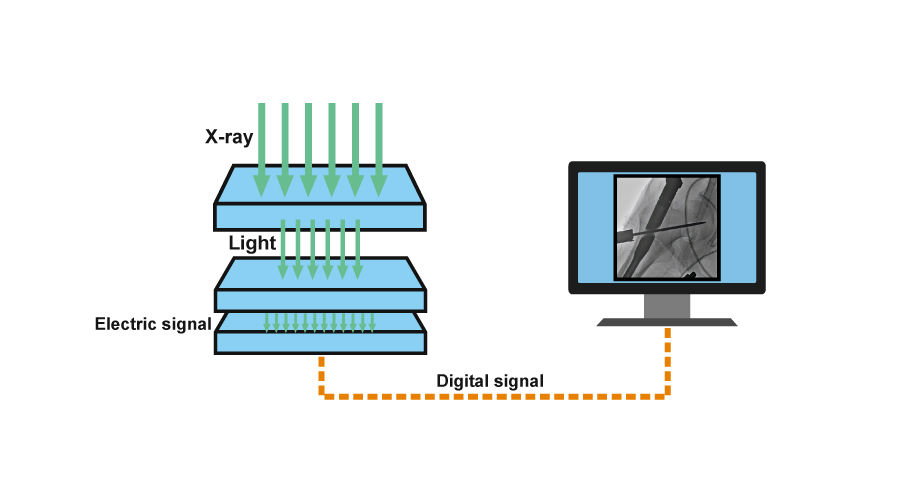
3. Imaging Process
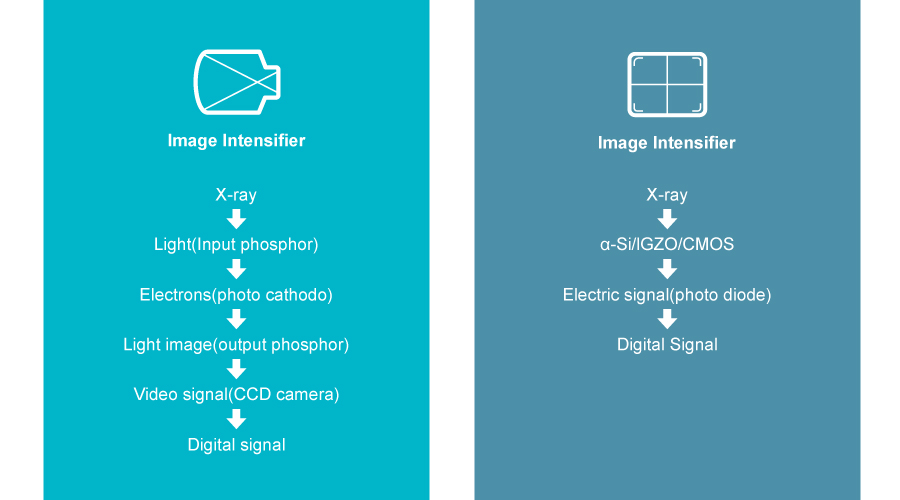
4. Radiation Dose
In addition, due to the limited field of view of the image intensifier, repeated shots of the same area may be required to obtain a complete image, resulting in an increased radiation dose. The speed at which images are acquired can affect patient safety due to radiation exposure. Flat panel detectors typically provide faster imaging times, reducing the patient's radiation exposure time. If minimizing radiation exposure is a priority, flat panel detectors may have an advantage.
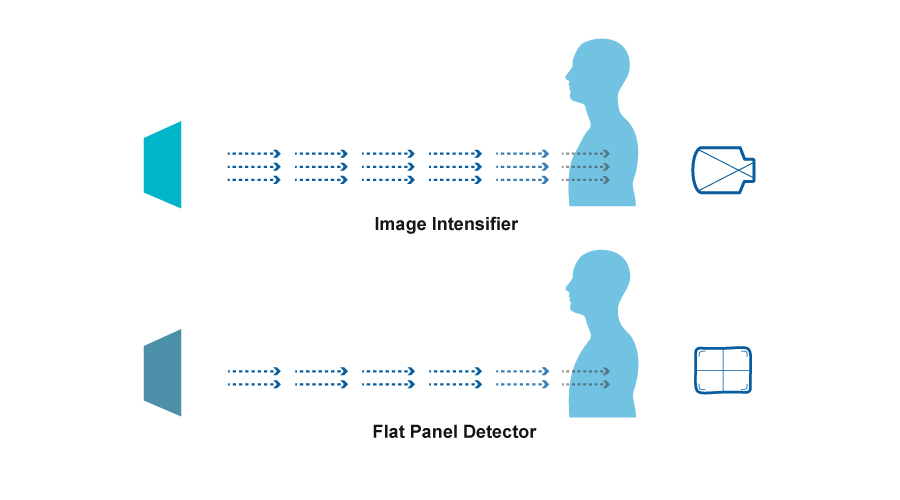
5. Resolution and Image Quality
The innovative flat-panel detector can perform 1:1 imaging of objects without signal loss or distortion, avoiding the imaging defects of image intensifiers.
Flat panel detectors generally provide higher-resolution images compared to image intensifiers, which contributes to superior diagnostic clarity. If your practice requires high-resolution imaging, the precision and detail provided by FPDs might be a determining factor.
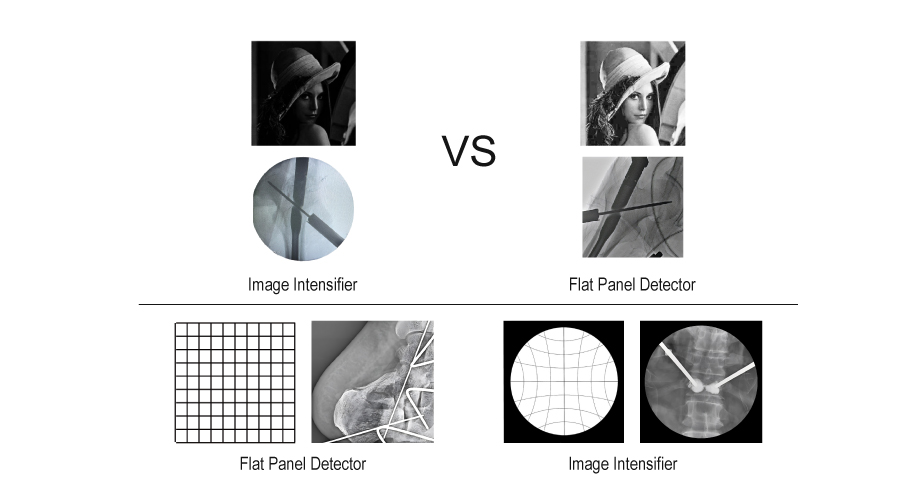
6. Cost and Maintenance
In terms of cost, image intensifiers may have a lower initial cost compared to flat panel detectors. However, in the long term, image intensifiers may increase maintenance costs due to degradation in performance and the need for replacement parts, in addition to the fact that flat panel detectors tend to provide better image quality and their development reflects the latest technological advances, with an expanding share of the market
7. Size and space
Size-wise, although the flat panel detector is shorter than the image intensifier, this leaves you more room to maneuver. Image intensifiers are typically bulkier and require more space than flat panel detectors. If you have limited operating space, a flat panel detector with a compact design may be better suited to your needs. This is a definite plus when you are operating on larger patients, for example, as it allows you to maintain precise control without sacrificing ergonomic comfort.
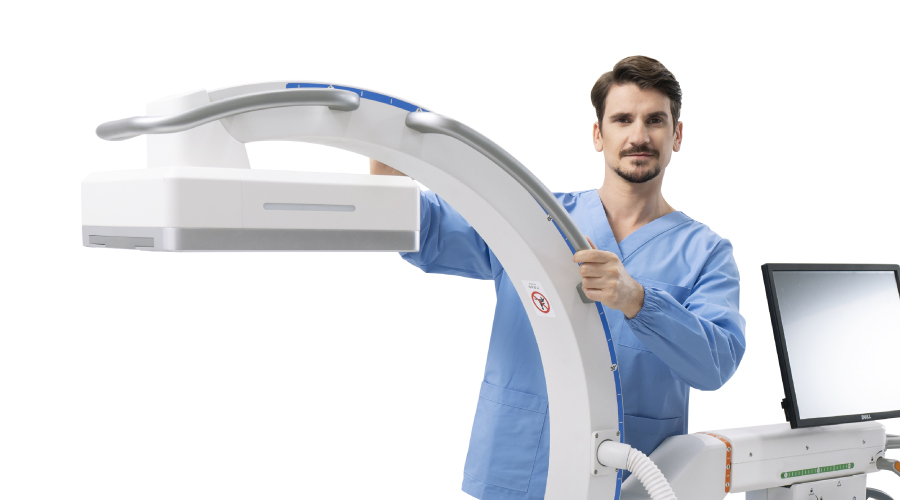
Flat Panel Detector

Image Intensifier
8. Comparison List
Now, let's see the pros and cons of Flat Panel Detector and Image Intensifier through this chart below:
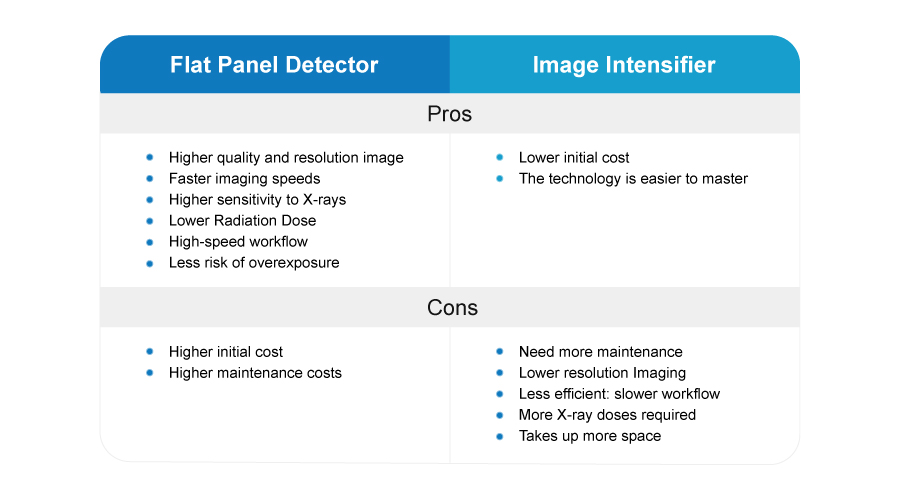
Conclusion
We hope this article can give you helpful information and help you know more about medical imaging technologies, if you would like to learn more about the options for upgrading to flat panel digital C-Arm deserves, Welcome to follow Browiner's SNS platforms and official website, hope you can learn more about the options.
https://www.browiner.com
https://www.facebook.com/BrowinerTech/
https://www.linkedin.com/company/shenzhen-browiner-tech-co.ltd